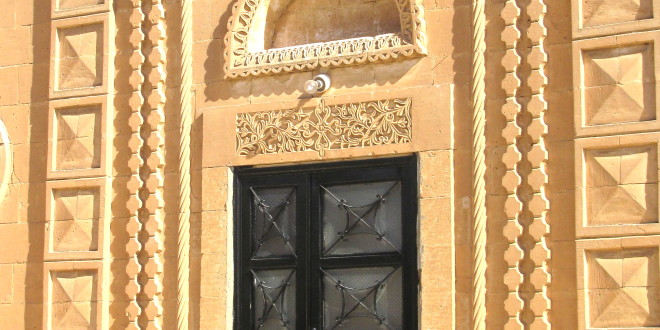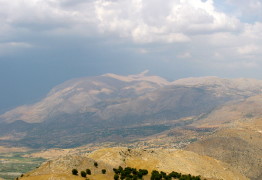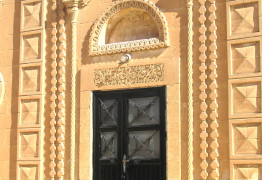A few months ago Sankar and I signed up for a tour to southeastern Turkey with the American Research Institute in Turkey. Although it wasn’t the ideal weekend (I am teaching a new course and needed to spend at least part of the weekend preparing), we went. We are trying to follow the middle-age-appropriate dictum, “accept all invitations.
Early Saturday morning we landed at the sparkling little airport in Sanliurfa, and then boarded a medium-sized tour bus with 22 others. As we drove, our guide, a doctor of archaeology, informed us that we were in Mesopotamia. I had associated Mesopotamia only with Iraq, but the word actually means “the area between the Tigris and the Euphrates Rivers,” and that is where we were.
We didn’t end up seeing the Tigris at all, but we were to cross the clean, clear Euphrates a number of times during the trip. At one point a Roman bridge spanned it and at another, a huge dam had been constructed to hold its waters. Elsewhere it filled canals covered to prevent evaporation.
Spindly trees come into view, planted in diagonal rows: pistachios. Then a low plant covered with white balls: cotton. (I am embarrassed to admit I did not recognize it.) Pepper fields, an occasional pomegranate planting, and a few olive groves were also roadside companions.We enjoyed chatting with our tour mates, the majority expatriates who have lived in Turkey for decades. Most have travelled all over Turkey, and they answered our newcomer questions.
One focus of our trip was the Commagenes, people who ruled southeastern Turkey from about 163BC to 72 AD. We drove and walked up Mount Nemrut, where they erected huge stone carvings that linked their leader, Antiochus, with the deities.
We visited an archaeological dig from the ninth millennium B.C. called Gobekli Tepe, which contains what are believed to be the oldest religious structures known. The German archaeologists at work there looked dashing and adventurous, definitely in the Indiana Jones mold! On Sunday, we gazed at tools and religious relics in the museum in Sanliurfa, birthplace of the prophet Abraham.
I was interested to learn that the Commagenes, and the Romans that came after them, were responsible for serious environmental degradation, cutting down vast forests for charcoal and timber, leading to severe erosion.
At the very end of the tour, we had a couple hours on our own, and we walked through the covered market in Sanliurfa, which we had visited briefly a year ago. I bought two colorful Syrian silk scarves from the same vendor, and we picked up some fresh pistachios.
Then we sat in the fading, late afternoon light enjoying the lovely reflection fish pool built to commemorate the prophet Abraham.
Before long, a Turkish gentlemen sitting next to us with his family introduced himself. Turks always want to know where Sankar is from; they think he might be Turkish, but my presence confuses them.
The man had a huge smile, and after asking us about our family, and how we liked Turkey, he exclaimed, “I want to invite you to my house to stay and have dinner!” His family beamed just behind him. Alas, our bus was leaving within the hour. We asked if we could take a picture of him and he quickly agreed, his wife pulling out a cell phone and taking our picture as well. As our smiling new friend posed with his family, however, he put on a serious “Turk” face. It was like he didn’t want just anyone to see him smiling, only the ones he chose.




Very exciting! My college major was archaeology, so I find this just fascinating.
Excellent! SE Turkey is definitely on my list of places to see yet! =)